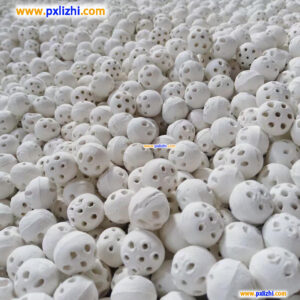
# Alumina Ceramic Ball: Properties and Applications
## Introduction to Alumina Ceramic Balls
Alumina ceramic balls are high-performance ceramic spheres made from aluminum oxide (Al₂O₃). These precision-engineered components have become essential in various industrial applications due to their exceptional properties. With alumina content typically ranging from 90% to 99.9%, these ceramic balls offer superior performance compared to traditional metal balls in many demanding environments.
## Key Properties of Alumina Ceramic Balls
### 1. Exceptional Hardness and Wear Resistance
Alumina ceramic balls boast a Mohs hardness of 9, second only to diamond. This extreme hardness makes them highly resistant to wear, even under continuous friction and high-load conditions. Their wear resistance is approximately 10 times greater than that of steel balls, significantly extending service life in abrasive environments.
### 2. Outstanding Corrosion Resistance
Unlike metal components, alumina ceramic balls demonstrate excellent resistance to:
– Acids (except hydrofluoric acid and hot phosphoric acid)
– Alkalis
– Organic solvents
– Salt solutions
This property makes them ideal for chemical processing applications where metal balls would rapidly degrade.
### 3. High-Temperature Stability
Alumina ceramic balls maintain their structural integrity at temperatures up to 1,600°C (2,912°F), with:
– No deformation under thermal stress
– Minimal thermal expansion
– Excellent thermal shock resistance
This thermal stability allows their use in furnace applications and high-temperature processing.
### 4. Electrical Insulation Properties
With volume resistivity of 10¹⁴-10¹⁶ Ω·cm, alumina ceramic balls serve as excellent electrical insulators. This property is particularly valuable in electronic applications where electrical conductivity must be avoided.
## Manufacturing Process
The production of alumina ceramic balls involves several critical steps:
1. Powder preparation: High-purity alumina powder is carefully selected and mixed with binders
2. Forming: The mixture is shaped into spherical forms through isostatic pressing or extrusion
3. Sintering: The formed balls undergo high-temperature firing (1,500-1,800°C) to achieve full density
4. Precision grinding: Final dimensions are achieved through meticulous grinding processes
5. Quality inspection: Each ball undergoes rigorous testing for dimensional accuracy and mechanical properties
## Applications of Alumina Ceramic Balls
### Industrial Bearings
Alumina ceramic balls are widely used in:
– High-speed machine tool spindles
– Chemical pumps
– Aerospace applications
– Semiconductor manufacturing equipment
Their combination of hardness, corrosion resistance, and low density makes them superior to steel in many bearing applications.
### Grinding Media
In the milling industry, alumina ceramic balls serve as excellent grinding media for:
– Ceramic raw materials
– Cement clinker
– Non-metallic minerals
– Advanced ceramic powders
Their wear resistance ensures minimal contamination of ground materials.
### Valve Components
The chemical industry extensively uses alumina ceramic balls in:
– Ball valves
– Check valves
– Control valves
Their corrosion resistance ensures long service life in aggressive chemical environments.
### Other Specialized Applications
Additional uses include:
– Precision measurement devices
– Semiconductor wafer handling
– Textile machinery guides
– Medical implant components
– Spacecraft components
## Advantages Over Metal Balls
Alumina ceramic balls offer several benefits compared to their metal counterparts:
1. Longer service life (3-10 times longer than steel)
2. Reduced maintenance requirements
3. Lower friction coefficients
Keyword: alumina ceramic ball
4. Lighter weight (approximately 60% of steel’s density)
5. Non-magnetic properties
6. Better dimensional stability
7. Reduced energy consumption in rotating applications
## Selection Considerations
When choosing alumina ceramic balls for specific applications, consider:
1. Alumina content (90%, 95%, 99%, or 99.9%)
2. Ball diameter and dimensional tolerances
3. Surface finish requirements
4. Operating temperature